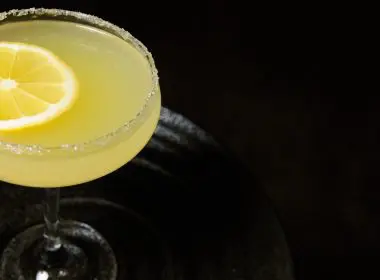Your Guide to Finding the Best Whiskey to Drink Neat
Jump to:
Welcome to our comprehensive guide designed to help whiskey enthusiasts discover the best whiskey to drink straight! With countless options on the market, understanding what makes a whiskey ideal for neat enjoyment is essential if you want to have a satisfying sipping experience.
In this guide, we’ll delve into the key factors to consider when selecting the best whiskey for enjoying neat, highlighting aspects like smoothness, taste profile, and overall drinking experience. Whether you’re a seasoned connoisseur or just starting your whiskey journey, this guide will equip you with the knowledge to make informed decisions and enhance your enjoyment of this timeless liquor.
Defining ‘whiskey straight’

For true whiskey enthusiasts, there’s a certain elegance and appreciation associated with enjoying the liquor in its purest form. This is where drinking whiskey straight (also known as ‘neat’) comes in. Interestingly, ‘straight whiskey’ is also a liquor category in the United States. It refers to a whiskey distilled from a fermented grain mash that’s aged for a minimum of two years in new, charred oak barrels.
However, this definition differs from the act of drinking whiskey straight. In our current context, ‘straight’ doesn’t refer to the legal definition of a type of whiskey, but rather the method of consumption. In short, drinking whiskey straight up means it’s served at room temperature, without any ice or mixers.
>> Learn more: Mastering Whiskey Neat: A Comprehensive Guide <<
There are several reasons why connoisseurs favor the neat approach:
- It unveils the full flavor of the liquor. Ice can numb the taste buds and dilute the whiskey, masking the intricate flavors imparted by the grains, the aging process, and the charring of the oak barrels. Drinking it neat allows the full spectrum of flavors to come through, from the initial sweetness to the spicy or woody notes that develop on the palate.
- It sets the scene for a multi-layered sensory experience. Sipping whiskey neat is an immersive experience. The aroma, the texture, the way the flavors evolve with each sip — all these elements contribute to a deeper appreciation for the craftsmanship behind the spirit.
- It allows for temperature control. There are some whiskey fans who believe that a slight chill can enhance certain flavors. As such, certain whiskeys are served slightly chilled (often referred to as “chilled neat”). On the other hand, neat consumption at room temperature allows for more precise control over the temperature. The trick lies in finding your favorite — experiment by letting the whiskey sit for a few minutes after pouring, allowing it to warm slightly and release more subtle aromas.
Kanpai! 12 Japanese Whisky Cocktails to Master
Qualities of the best straight whiskeys

Are you ready to discover what makes a whiskey perfect for sipping straight? Let’s delve into the key qualities that elevate certain types of whiskey for this delightful experience.
Taste profile
- Smoothness. One of the most sought-after qualities in a straight whiskey is smoothness. A smooth whiskey glides effortlessly across the palate, offering a pleasurable drinking experience without any harsh or overwhelming sensations.
- Complexity. A truly great straight whiskey comes to the party with plenty of complexity. Each sip unfolds layers of flavors and aromas, keeping things intriguing and leaving your palate satisfied. Look for a whiskey that offers a rich bouquet of flavors, from subtle notes of vanilla and caramel to more pronounced hints of spice and oak.
- Balance of flavors. Sipping whiskeys should have a very well-balanced flavor profile. Some walk the line between sweetness and bitterness; others weave together fruity and woody notes. This tonal variety sets the scene for a satisfying and enjoyable drinking experience from start to finish.
Behind the scenes
Now, let’s take a closer look at the craftsmanship and processes that contribute to creating the ideal whiskey for savoring straight.
- Aging. Behind every great straight whiskey lies a period of patient aging in quality barrels. Aging imparts depth and character to the whiskey, smoothing out rough edges and enhancing its flavors. Bourbon is typically aged in charred oak barrels, and some other whiskies spend time in barrels that previously held sherry or other liquors. This plays a pivotal role in shaping a whiskey’s profile.
- Distillation process. The distillation process is where the magic happens, transforming raw ingredients into liquid gold. When distillers pay meticulous attention to detail during distillation, it ensures that their whiskey retains its desired characteristics, whether it’s the purity of a single malt Scotch or the complexity of a bourbon mash bill. Understanding the nuances of the distillation process can deepen your appreciation for the craftsmanship behind each bottle of whiskey.
- Mash bill. The mash bill, or the blend of grains used in production, is a key determinant of a whiskey’s flavor profile. For instance, bourbon distillers mostly use corn mash, while rye whiskey is made with (you guessed it!) rye, and Scotch is typically crafted from malted barley. The choice of grains significantly influences the final product. Exploring different mash bills can lead to exciting discoveries and help you find whiskeys that suit your taste preferences.
Rye vs Bourbon: The Difference Between Rye Whiskey & Bourbon
Top picks for straight whiskey

Your personal palate plays a huge role when it comes to selecting good whiskey to drink straight. While you are in the process of discovering your favorites, here are a few of our top picks to try:
- Single-barrel bourbon. Kentucky Spirit is an iconic bourbon from a single barrel. It has a full, round body, layered with rich flavors of vanilla, almond and honey, and a long. smooth finish that rests on notes of caramel and leather.
- Barrel-proof rye. Wild Turkey Rare Breed Rye starts sweet with caramel apple up front, followed by rich, complex layers of honey, vanilla, rye grain spice, and charred oak underneath. The finish is smooth and drawn-out, with lingering spice flavors mingling with dried fruit, and a pleasant, fading warmth.
- Kentucky straight whiskey (bottled in bond). Wilderness Trail makes an amazing Kentucky Straight bourbon with a Bottled in Bond (BiB) assurance. BiB states that the bourbon was properly distilled, aged between 5-6 years and bottled under the supervision of the U.S. government at 100 proof – excellent for straight sipping.
- Non-chill-filtered Scotch. The Glen Grant 12-Year Non-Chill-Filtered Whisky offers a full, creamy mouthfeel and notes of toffee and rich fruit. The finish is nutty with subtle bursts of spice.
- Double barrel Canadian whisky. Forty Creek Double Barrel Reserve is named after the unique process of double aging. The resulting whisky combines the spiciness of Canadian grain whisky with the sweetness and mellowed characteristics of bourbon.
Read next: Make These 8 On the Rocks Cocktails Like a Pro
Factors to consider when choosing a whiskey to drink neat

The world of whiskey offers a vast array of flavors and styles, and selecting the right bottle becomes an important part of the experience. Here are some factors to consider:
Know your palate
Sweet or spicy? Do you gravitate towards sweeter profiles with notes of vanilla and caramel, or do you enjoy the spicier kick of rye whiskey? Understanding your preference for sweetness or spice will help narrow down your options.
Smoky or smooth? Some whiskeys, particularly Islay Scotches, are known for their smoky peat influence. If you prefer a smoother taste, opt for whiskeys matured in used barrels or those finished in wine or sherry casks.
Availability
- Local gems. Many regions have their own unique whiskey styles. Exploring local distilleries or craft whiskeys can be a rewarding way to discover hidden gems.
- Global brands. Popular whiskey brands offer a wider range of expressions, allowing you to experiment with different ages, finishes, and grain bills.
Pour with ease: 12 Rye Whiskey Cocktails to Make at Home
Expanding your whiskey horizons
Once you’ve settled on a starting point, here are some tips for exploring new territories:
- Sample flights. Many bars and liquor stores offer whiskey flights, allowing you to taste several different expressions before committing to a full bottle.
- Online reviews. Read reviews and recommendations from whiskey enthusiasts. Look for reviews that mention similar taste preferences to yours.
- Ask the experts. Bartenders with whiskey expertise and employees of speciality liquor stores can provide valuable insights and recommendations based on your preferences.
Expert insider tips

Tristram Fini, our friend from the Campari Academy UK, has shared a few valuable tips for folks who want to understand more about drinking whiskey straight:
How to appreciate whiskey nuances
- Choose your glassware with care. To fully appreciate the nuances of whiskey, consider using a Glencairn glass, specifically designed for Scotch whisky tasting. Another excellent option comes from Denver & Liely, a Melbourne-based producer that creates glassware tailored to enhance the characteristics of various liquors, including single malt, bourbon, Japanese whisky, and agave liquors like tequila and mezcal. A standard double old-fashioned or rocks glass also works well.
- Add a bit of water. To better understand the whiskey’s flavors, try adding a few drops of water. This can help reduce the overpowering effects of ethanol and make it easier to interpret the tasting notes, though it may slightly alter the texture. A good approach is to taste the whiskey neat first; if you feel it needs dilution to reveal more flavors, go ahead and add water.
- Try the Kentucky Chew. One intriguing technique, known as the “Kentucky Chew,” was shared with me by Eddie Russell at Wild Turkey. It involves swishing the whiskey around your mouth on the first sip to prime your palate without breaking apart the flavors. This introduces the ethanol, textures, and base flavors. On the second sip, enjoy the whiskey again, swishing it around while exhaling. This method enhances your experience by enabling you to detect subtle aromas that may have escaped your notice during the initial tasting.
Rare and unique whiskey expressions to explore
Each distillery has its own unique history, and discovering vintage bottles can provide fascinating insights into the past. Vintage expressions, particularly those from the 1950s and 1960s, offer a glimpse into what whiskey used to be like. For instance, bottles from Speyside distilleries, such as Glen Grant’s 5- or 12-year-old expressions bottled in the 1970s, showcase characteristics that differ significantly from modern offerings.
These older whiskeys tend to be more rudimentary, reflecting less advanced distillation techniques and providing a snapshot of whiskey production during that era. Importantly, vintage bottles often come at a more accessible price point compared to rare, high-age expressions, which can be a substantial investment.
For whiskey lovers who wish to enjoy these rare finds rather than simply collecting them as investments, exploring vintage stock is an excellent way to appreciate the history and evolution of whiskey.
Emerging trends on the horizon
One of the most exciting emerging trends in the whiskey world is the rise of American single malt. Produced primarily in the western United States, particularly in Oregon, Washington State, and Pennsylvania, this style draws inspiration from traditional Scottish single malts and uses malted barley as its primary grain.
The lack of stringent regulations surrounding American single malt allows for greater experimentation, leading to innovative and unique offerings. Producers in these regions are crafting exceptional whiskeys that showcase their distinct terroir. For instance, Westward, under the guidance of master distiller Miles, has gained attention for its fascinating expressions, making American single malt a style to watch as it continues to evolve.
There you have it – the skinny on everything you need to know when you want to explore the option of drinking whiskey straight. As always, remember to enjoy responsibly. For more info on different types of whiskey, and to explore the best options to enjoy neat, visit the Wild Turkey, The Glen Grant, Wilderness Trail, and Forty Creek websites.











